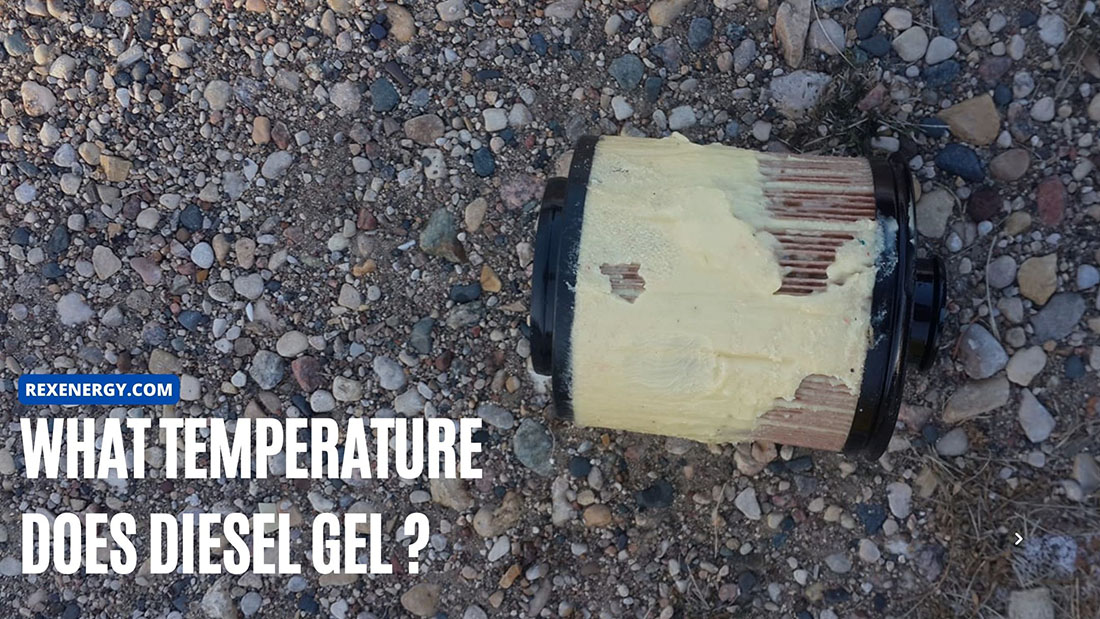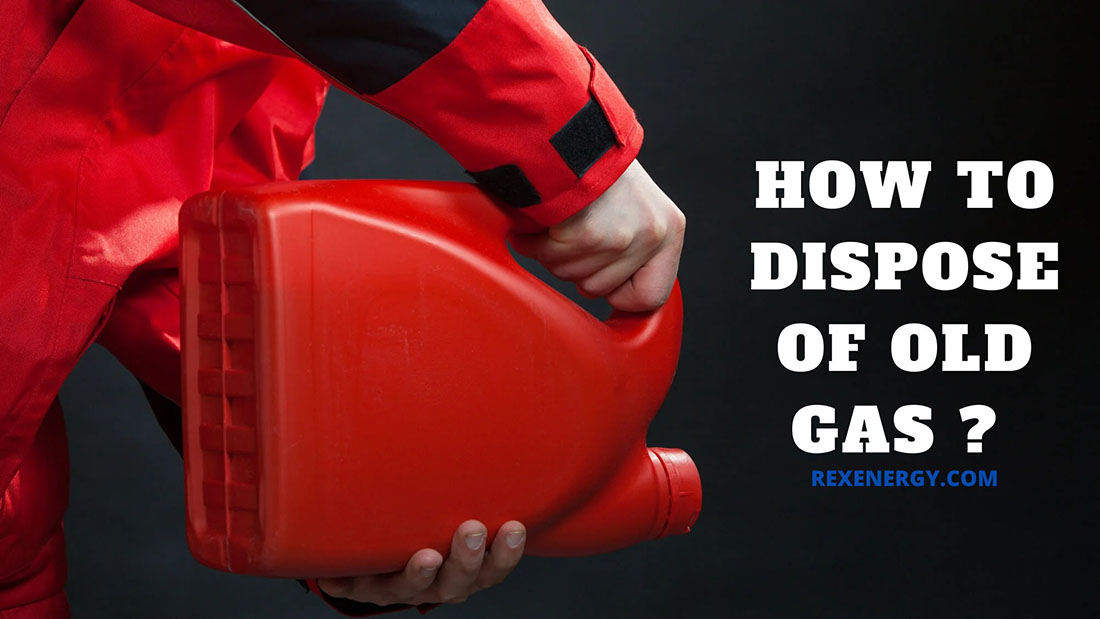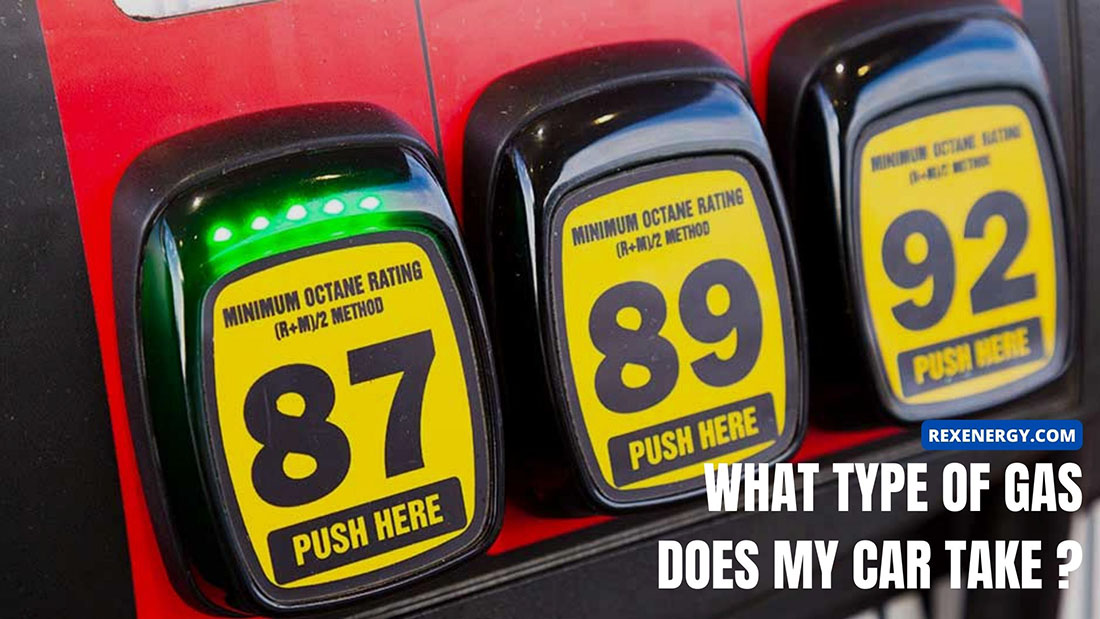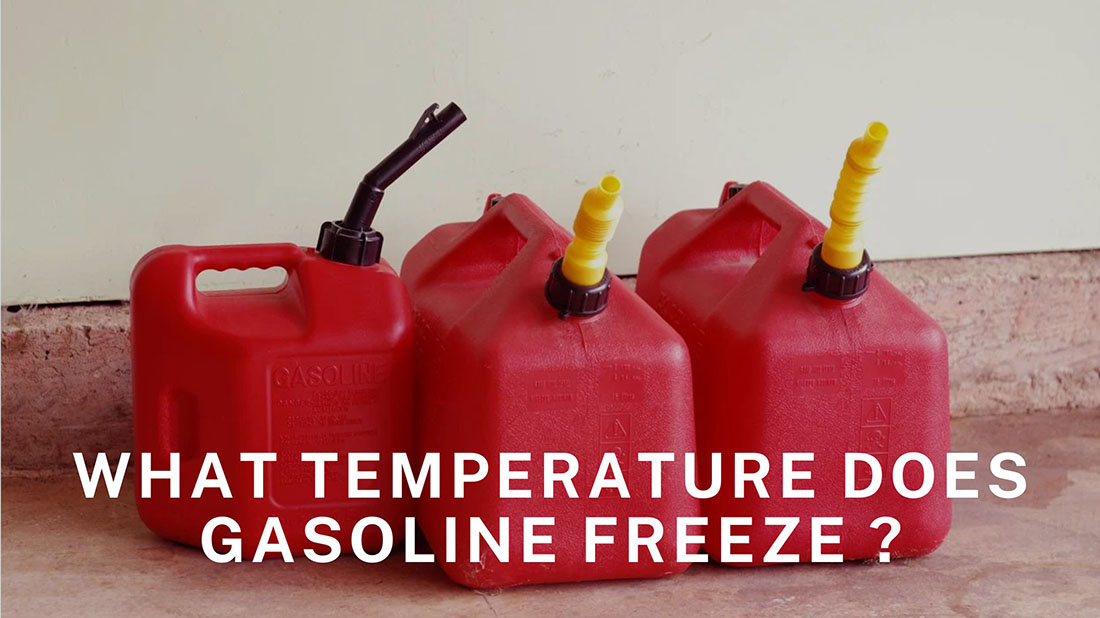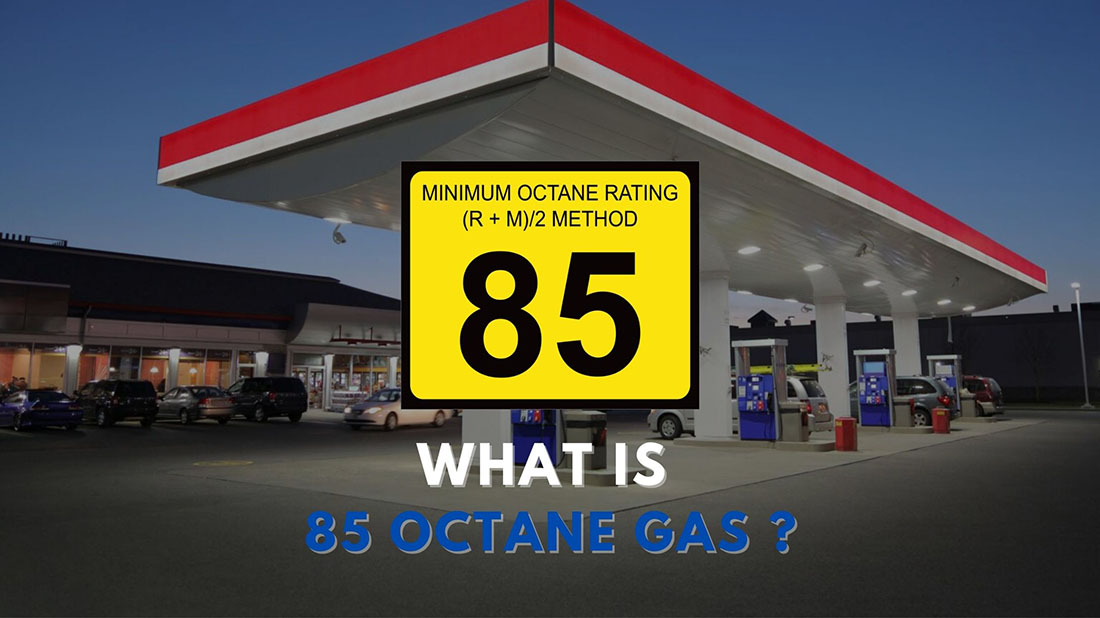Ambient temperature has a strong impact on diesel performance, especially in winter and colder climates. Once reaching its freezing point, the fuel will solidify into a thick, gel-like paste, which struggles to lubricate and power the engine if left untreated.
This article will explore the causes of the gelled fuel and how to handle it properly.
When Does Diesel Gel?
When the temperature falls below 10°F (-12°C) to 15°F (-9°C), wax particles in diesel will form and turn it into a gel. These wax crystals hinder the fuel flow, making it hard to start the engine. The exact gelling point may vary with different diesel components.
In cold weather, diesel is susceptible to more issues than gelling.
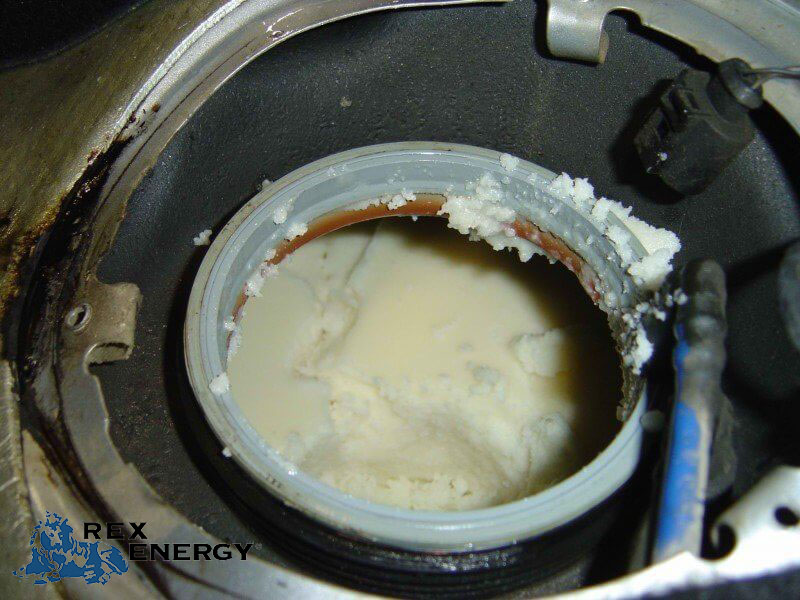
Water/Icing Issue
First, it’s important to be aware of the potential presence of water (or water vapor) in your diesel fuel, which can result from factors like condensation and possible leaks. Anything higher than 10°F to 15°F sets the stage for the icing issue, in which the water in the fuel freezes, not the diesel itself.
Water does not blend well with diesel but forms puddles in the fuel, which solidify at a higher temp (32°F) than your diesel.
If you are lucky, the frozen water only occurs at the bottom of the tank and resolves itself once you enter warmer zones. Other than that, water will find its way into the fuel lines and other parts and freezes, impeding their functions. Ignoring the symptoms while continuing your trip in the extreme cold will escalate them to a real fuel problem, leading us to the gelling issue.
The Cloud Point Of Diesel & Gelling
In normal cases, the paraffin acts as a lubricant to smooth out the diesel texture and improve its viscosity. However, the paraffin wax grows thicker in cold weather and becomes crystals. These crystals start sticking together once they reach their cloud point or gelling point (below 10°F to 15°F), turning your fuel into a cloudier color.
Now, the diesel condenses into a solid, gel-like mass that can no longer flow as a liquid. The fuel is much more resistant to flowing now. Instead, it remains unmoving within the fuel tank or fuel lines, looking opaque and hazy.
Sometimes, the wax even clogs all fuel filters, making it almost impossible for the engine to run properly.
How Cold and Freezing Temps Affect Diesel
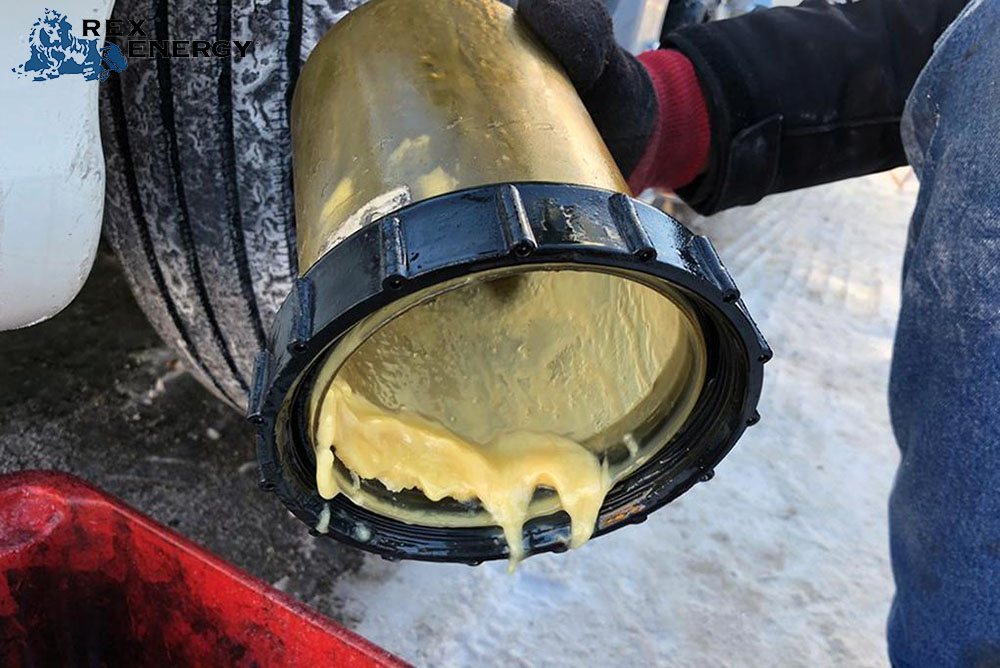
Poor Ignition and Combustion
In cold weather, diesel fuel struggles to vaporize and form a combustible air-fuel mixture within the engine, leading to an incomplete combustion cycle. Rough starting, misfires, and uneven power delivery will occur as a result.
Reduced Power and Efficiency
As the temperature drops significantly lower, wax crystals form within the diesel, solidifying and clogging your fuel filters, which disrupts the engine’s fuel flow. Debris and dirt also infiltrate easily since the filter no longer works properly; your car will suffer when accelerating, decelerating, or climbing steep slopes.
Engine Tear and Wear
Diesel’s natural lubricity usually diminishes in cold weather, which increases excessive friction in important system components like fuel pumps and injectors. In the worst case, you might have to spend thousands on operating costs, fuel system repairs, and extra maintenance to recover from this premature damage.
How to Know When The Diesel Starts Gelling?
Your Engine Cannot Start
The diesel’s gel-like consistency impedes smooth fuel flow within the system, like the fuel lines and fuel filters.
So when you try to start your car, the gelled fuel obviously cannot flow properly through the components, leading to insufficient fuel supply for the engine. It might take several minutes to a few hours to start – or, worse, the car cannot even start at all.
Changes in The Fuel Rail Pressure
Are you a truck driver carrying heavy loads? Then, you might notice a huge difference between the desired fuel rail pressure and the actual rail pressure when accelerating.
These values are closer to each other while cruising at regular speeds. But once you step on the accelerator, the desired pressure can surge to, for example, 180 MPa, while the actual pressure remains lower, around 30-50 MPa. This significant discrepancy likely indicates your fuel has become gelled.
Is Black Smoke A Sign of Fuel Gelling?
No, it is not.
Black smoke only indicates your air-fuel ratio is not balanced (too much fuel and not enough air in the mixture). Other reasons might be dirty injectors, unclean carburetors, or serious injection issues that are not at all related to diesel gelling.
How to Ungel and Fix Your Diesel Fuel?
The great news is that your diesel will ungel when it warms up, so you only need to leave your car in the garage (or any warm and enclosed places) for 1-2 hours.
But what if the temperature doesn’t go up or you cannot find any available warmer space? Then fuel additives will be your life-saver:
Step 1. Pour a dosage of your chosen fuel additive into the tank; 1 ounce per every 10 gallons of remaining fuel is the safest ratio. Leave at least 2 to 4 ounces of additive left in the can for Step 2.
Step 2. Remove the fuel filter, then pour some of the remaining fuel additive straight onto the filter element. Use the remaining additive for the filter housing, too; once done, you will start hearing a cracking sound, indicating that the fuel lines are starting ungelling.
Step 3. Reattach the housing and filter element to their place, then prime your diesel system as instructed by the manual/manufacturer. Wait about 30 minutes to 1 hour for the fuel additive to take effect.
Step 4. At this point, your engine should start easily. If it doesn’t work, wait another hour or two, then contact an automobile service for further inspection.
How to Prevent Gelling In The Future?
Keep Your Car Away From The Cold
The easiest way to fight off gelling is simply to minimize outings whenever the weather forecast predicts extremely low temperatures. It is also a great idea to park your car in a warm garage (or any climate-controlled area), especially in winter.
Use Anti-Gel or Fuel Additives
Your engine cannot stay warm even with proper storage? Consider buying fuel additives or anti-gel products to prevent gelling. Even when the ambient temperature drops below 10°F, they can still keep your fuel flowing consistently.
Using them is straightforward: pour some additives into the fuel tank first, then put diesel in next.
Use Fuel Heaters
Many drivers integrate fuel heaters/fuel warmers into their fuel systems to maintain consistent temperatures in cold conditions. Better yet, these devices usually come with a temp probe, which will monitor and inform you of sudden temperature changes in the diesel.
Conclusion
Now that you know at what temp diesel gels, avoid driving in extremely cold temperatures and consider using fuel heaters/ additives to stabilize the diesel further.
Fixing gelled fuel is quite simple with a few drops of fuel additives or several hours of storage in warm temperatures. But if both these methods do not work, contact a mechanic for help.

